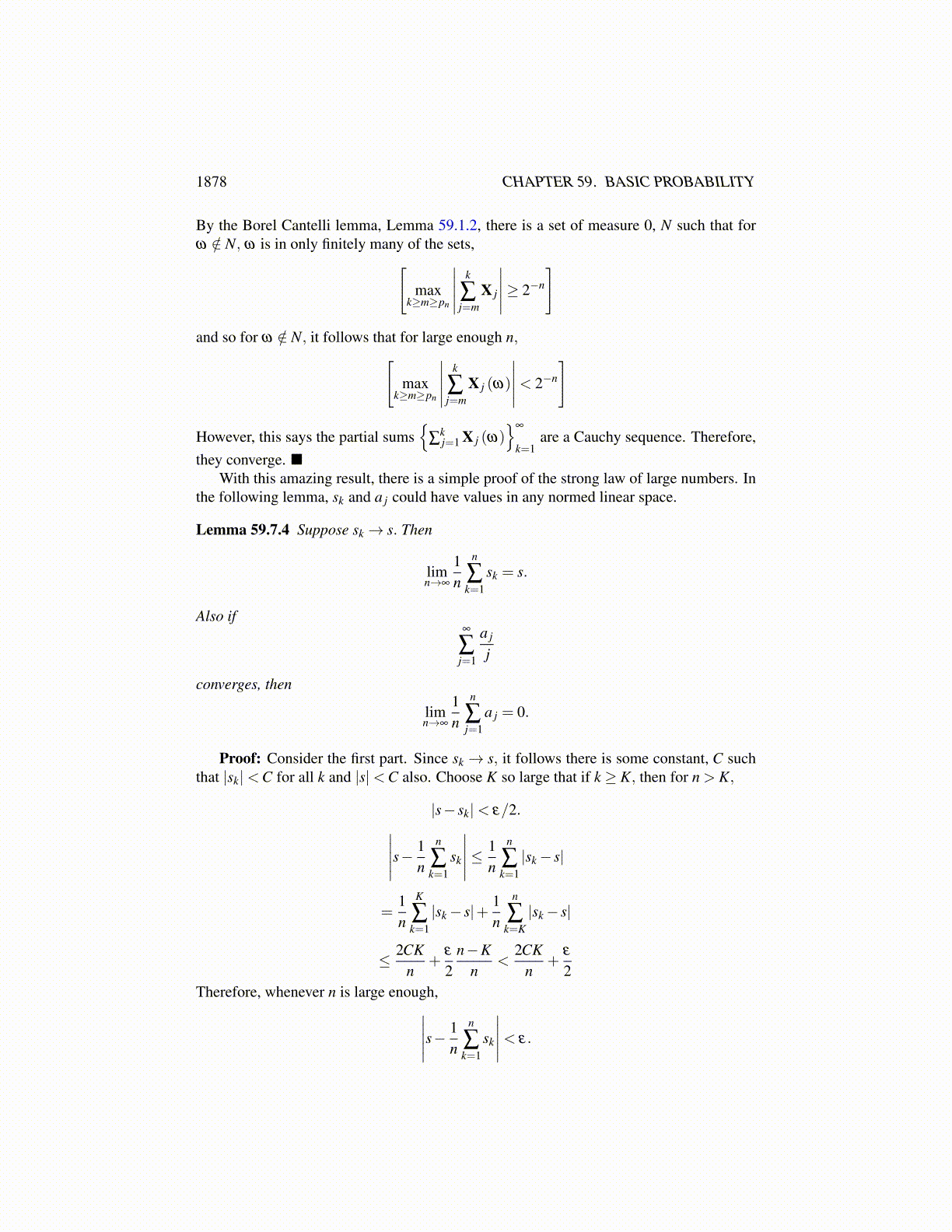
1878 CHAPTER 59. BASIC PROBABILITY
Written more succinctly, ∣∣∣∣∣ n
∑j=1
X j
∣∣∣∣∣2
=
∣∣∣∣∣ k
∑j=1
X j
∣∣∣∣∣2
+ ∑j>k or i>k
(Xi,X j)
Now multiply both sides by XAk and integrate. Suppose i ≤ k for one of the terms in thesecond sum. Then by Lemma 59.3.4 and Ak ∈ σ (X1, · · · ,Xk), the two random vectorsXAk Xi,X j are independent,∫
Ω
XAk (Xi,X j)dP =
(∫Ω
XAk XidP,∫
Ω
X jdP)= 0
the last equality holding because by assumption E (X j) = 0. Therefore, it can be assumedboth i, j are larger than k and
∫Ω
XAk
∣∣∣∣∣ n
∑j=1
X j
∣∣∣∣∣2
dP =∫
Ω
XAk
∣∣∣∣∣ k
∑j=1
X j
∣∣∣∣∣2
dP
+ ∑j>k,i>k
∫Ω
XAk (Xi,X j)dP (59.7.10)
The last term on the right is interesting. Suppose i > j. The integral inside the sum is of theform ∫
Ω
(Xi,XAk X j
)dP (59.7.11)
The second factor in the inner product is in
σ (X1, · · · ,Xk,X j)
and Xi is not included in the list of random vectors. Thus by Lemma 59.3.4, the two randomvectors Xi,XAk X j are independent and so 59.7.11 reduces to(∫
Ω
XidP,∫
Ω
XAk X jdP)=
(0,∫
Ω
XAk X jdP)= 0.
A similar result holds if j > i. Thus the mixed terms in the last term of 59.7.10 are all equalto 0. Hence 59.7.10 reduces to
∫Ω
XAk
∣∣∣∣∣ n
∑j=1
X j
∣∣∣∣∣2
dP =∫
Ω
XAk
∣∣∣∣∣ k
∑j=1
X j
∣∣∣∣∣2
dP
+∑i>k
∫Ω
XAk |Xi|2 dP
and so ∫Ω
XAk
∣∣∣∣∣ n
∑j=1
X j
∣∣∣∣∣2
dP≥∫
Ω
XAk
∣∣∣∣∣ k
∑j=1
X j
∣∣∣∣∣2
dP≥ ε2P(Ak) .